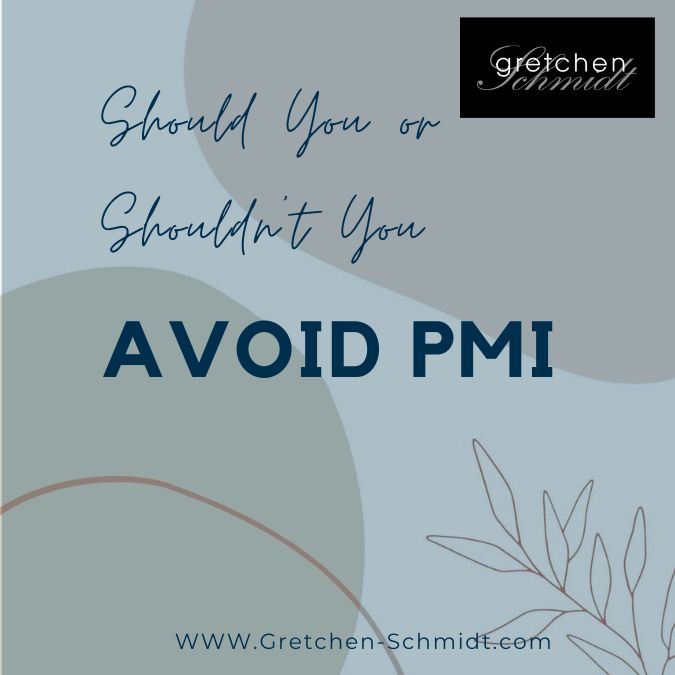How to Get the Best Mortgage Series – Week 8
Welcome back to my “Find The Best Mortgage For You” series your financial situation and goals. This week, we’re diving into Private Mortgage Insurance (PMI) and exploring whether you should avoid it or embrace it.

Understanding PMI
Here’s a simple explanation of mortgage PMI:
What is PMI? PMI stands for Private Mortgage Insurance. It’s a type of insurance that you might have to pay if you can’t put down a big enough down payment when buying a house.
Why PMI is Required? Lenders require PMI to protect themselves in case you can’t pay back the loan. If you don’t have at least 20% of the home’s price as a down payment, they see it as a risk.
Cost of PMI: PMI can cost between $20 to $50 per month for every $100,000 you borrow. So, if your loan is $200,000, it might cost you $40 to $100 per month.
How to Avoid PMI: You can avoid PMI by:
- Putting down at least 20% of the home’s price.
- Finding special programs for first-time buyers.
- Taking out two loans (called a piggy-back mortgage).
Getting Rid of PMI: You can get rid of PMI once you have 20% equity in your home, which means you’ve paid off enough of the loan, but FHA loans require it until the loan is paid in full.
Pros and Cons of PMI
Many buyers worry about PMI payments, especially if they can’t put 20% down. However, PMI has gotten a bad rap, perhaps unnecessarily. Here’s the scoop on how to think about PMI and decide whether you should avoid it or use it to help you get into your new home.
Ways to Avoid PMI
For first-time buyers, there are programs that allow for low down-payments and waive PMI if you have good credit. Local and state programs for moderate-income buyers can help you find such options. If you have good credit, some lenders offer the option to “buy out” the PMI by taking a slightly higher interest rate, which could be less expensive in the short term if you plan to stay in your home for only five years or so.
Another option is a piggy-back mortgage, such as an 80/10/10 or 80/15/5, where you take out two loans to cover the cost of the home. Some lenders may allow you to pay PMI upfront, in cash, rather than dealing with the additional monthly cost. By paying upfront, the lender will give you a discount off the total PMI cost.
Why You Might Keep PMI
Paying PMI means you can buy your home now and not delay homeownership. It could take years to save up for a larger down payment, which means more years of renting and not investing your money in a home that you own. Once you save up for a larger down payment, you may face higher home prices and interest rates, costing you more in the long run than if you paid PMI with a home bought earlier.
Paying PMI could be worthwhile if it allows you to buy a home in a thriving housing market rather than delaying for a more uncertain market. You will benefit from rising home prices and get to 20% equity sooner, allowing you to cancel your PMI.
Conclusion
There are good reasons to avoid PMI, but it might make more sense to pay PMI if it gets your foot in the homeownership door sooner. Don’t talk yourself out of a home if you don’t have 20% down. PMI is not all bad and can be a temporary way to get you into your new home sooner than waiting to save.
Hi, there!
Hi! I'm Gretchen Schmidt. I help busy professionals in the Pacific NW. I can remove the overwhelm of getting your house ready to sell, and remove the worry that you'll miss out on your dream home. Thank you for being here and I hope to help you get started finding your next home.
Ready to go now?
Let's get started with a coffee or a cocktail.
Contact
206-850-4977
3518 SW Genesee St.
Seattle, WA 98126
gretchen@gretchen-schmidt.com
Sell
Buy
Client Success Stories
Let's Chat! Pick a time.
Great Series to Help You Get Started
> Everything You Didn't Know You Needed To Know Before Buying A Home
> Just For You: Dirty Little Secrets for Buying A Home
> Homeowners: How to Protect Your Home and Not Break Your Budget
> Homeowner Tips Such As: How to Tell it's Time to Replace Your Water Heater